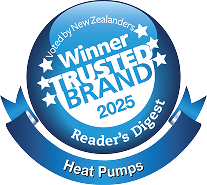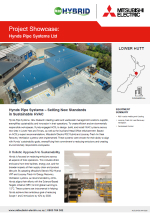Hynds Pipe Systems – Setting New Standards in Sustainable HVAC
Hynds Pipe Systems, New Zealand’s leading water and wastewater management solutions supplier, exemplifies sustainability and innovation in their operations. Mitsubishi Electric R32 Hybrid and Lossnay Fresh Air Heat Recovery Ventilation systems were chosen for their ability to align with Hynds’ sustainability goals, exemplifying their commitment to reducing emissions and creating environmentally responsible workspaces.
A Holistic Approach to Sustainability
Hynds is focused on reducing emissions across all aspects of their operations. This includes direct emissions from their facilities, energy use, and the broader impacts of their supply chain and product lifecycle. By adopting Mitsubishi Electric R32 Hybrid VRF and Lossnay Fresh Air Energy Recovery Ventilation systems, Hynds aligns their efforts with the Science-Based Targets Initiative (SBTi) to limit global warming to 1.5˚C. These systems are instrumental in helping Hynds achieve their ambitious goal of reducing Scope 1 and 2 emissions by 42% by 2032.
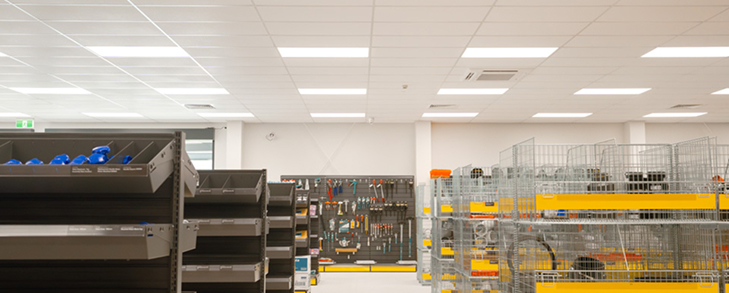
Prioritising Team Safety and Comfort
As a responsible PCBU (Person Conducting a Business or Undertaking), Hynds placed employee well-being at the forefront of their decision-making. Following ACSL's guidance, they selected an HVAC system that ensured compliance with New Zealand safety standards while delivering superior comfort.
The R32 Hybrid System stood out due to its innovative design, which uses water as the primary heat exchange medium instead of refrigerants in occupied spaces. This reduces the risks associated with flammable refrigerants, ensuring compliance with safety standards such as AS/NZS5149.

Enhanced Comfort
An additional advantage of the R32 Hybrid system's water-based design is its ability to enhance comfort for Hynds staff. Water as a heat transfer medium provides milder supply air temperatures and significantly reduces drafts, creating a more pleasant indoor environment.
Furthermore, water-based systems offer superior control compared to refrigerant-based alternatives, particularly during part-load operations, which occur most of the time. This ensures more precise and consistent temperature regulation, contributing to an overall improved experience for building occupants.
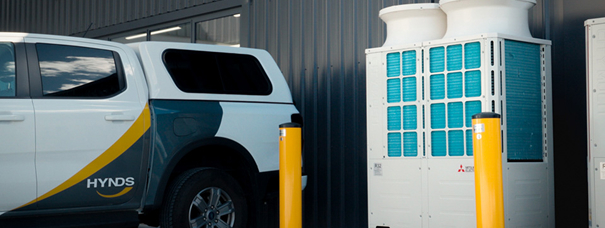
A System with Minimal Environmental Impact
Hynds sought an HVAC solution that minimised environmental impact while adhering to their sustainability goals. This led to the adoption of a solution utilising a new-generation refrigerant with a significantly lower Global Warming Potential (GWP) compared to older alternatives. Equally important was choosing a system that required the smallest possible amount of refrigerant, further reducing its environmental footprint.
While many systems on the market still rely on older refrigerants with high GWP ratings, newer options, though more environmentally friendly, often present safety challenges due to their flammability. These considerations made finding a suitable system both essential and complex. The R32 Hybrid System fulfilled the requirements by:
- Using R32 refrigerant with a Global Warming Potential (GWP) of 675, significantly lower than traditional refrigerants with ratings up to 2090.
- Requiring approximately half the refrigerant volume of traditional systems.
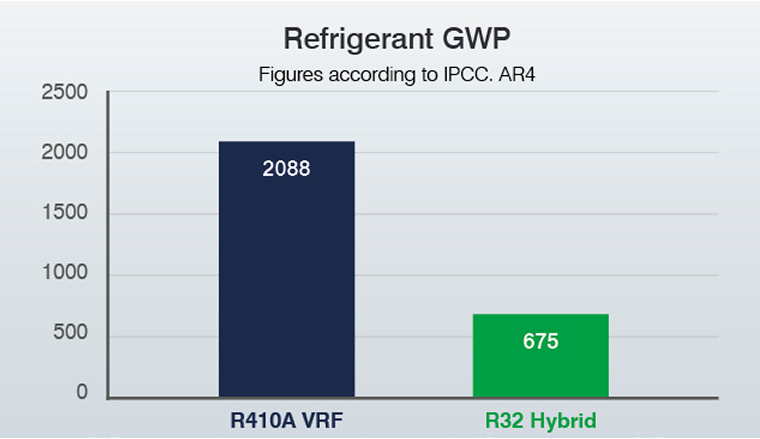
GWP is a measure of the warming potential as compared to CO2 which has a unitary GWP of 1.
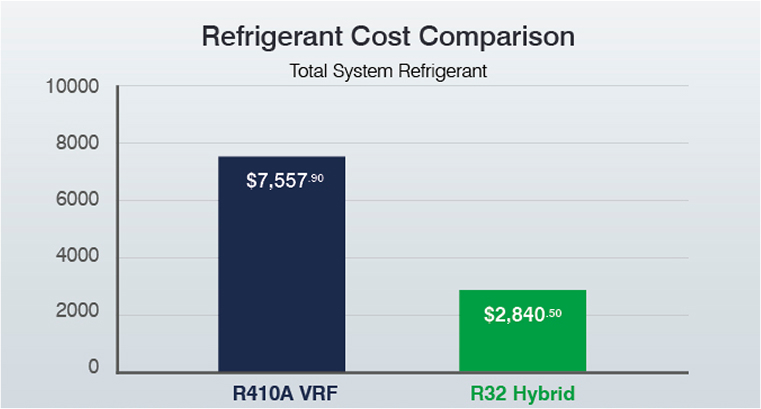
Refrigerant cost calculated at R32 = $115 per kg, R410A = $177 per kg. Levy added at $42.19 per kg for R32 and $119.64 per kg for R410A. Based on Lower Hutt site.
Tangible Environmental Benefits
At the Lower Hutt site, the environmental benefits of the R32 Hybrid System were clear:
- Refrigerant emissions equated to 16 tonnes of CO2, compared to 89 tonnes with traditional systems — a fivefold reduction.
- The system's water-based design enhances energy efficiency, precisely matching capacity to the building's requirements and reducing waste.
These features underscore Hynds' dedication to environmental stewardship and position the R32 Hybrid System as a benchmark for sustainable building practices.
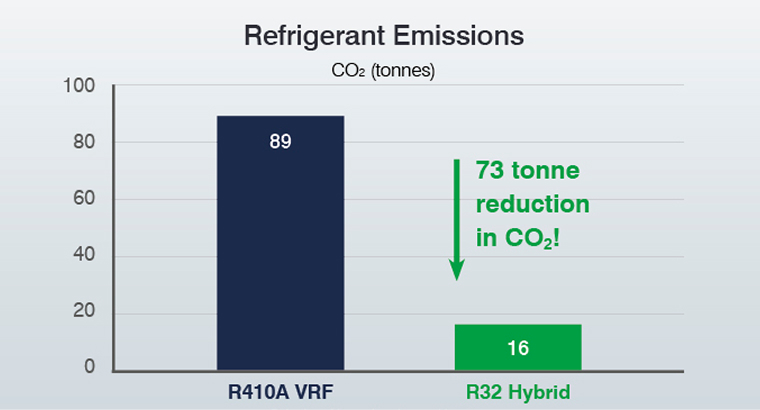
Calculated based on Lower Hutt site.

Investing in Long-Term Value and Lowering Estimated Operating Costs
Hynds' commitment to financial diligence played a critical role in selecting HVAC systems. The R32 Hybrid System significantly reduces operating costs by:
- Minimising energy use through precision temperature control, delivering only the heating or cooling needed without waste.
- Eliminating the need for refrigerant sensor maintenance, which would have cost approximately $3,000 annually for calibration and $8,800 every three years for replacement in one site. Over 15 years, this equates to over $100,000 in potential savings.

The R32 Hybrid System's water-based design offers an adaptable and efficient solution. Water enables precise flow adjustments, delivering the exact cooling or heating required and reducing energy waste. Since air conditioning systems usually operate at part capacity, the system's precision results in consistent efficiency and real-world savings.
Additionally, the Hybrid System avoids the need for costly refrigerant leakage sensors, which are commonplace to achieve compliance on many multi head systems irrespective of the refrigerant used. At the Naenae Lower Hutt site, on a fully refrigerant based system these sensors alone would have added approximately $3,000 annually for calibration and $8,800 every three years for replacement, totalling over $100,000 across 15 years. By eliminating this expense, the Hybrid System reduces maintenance demands and estimated long-term operating costs.
This combination of energy efficiency and maintenance savings ensures the R32 Hybrid System is not only sustainable but also economically sound.
The CAPEX and OPEX Breakdown below showcases the estimated Leak Detection System cost if a traditional R410A VRF system currently available on the market was used.
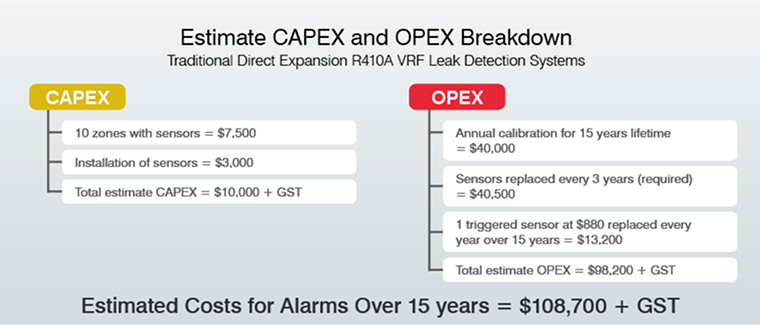
Calibrated minimum once per annum, and allow for calibration price increases. Over 15 years of life of VRF, figures are based on Sensors being replaced 3 times, and allow for sensor price increases. Average Sensor life 3-5 years. Sensors require replacement if triggered, these figures assume one triggered Sensor per annum. Estimate only.
Future-Proof Design
The water-based architecture of the R32 Hybrid System ensures adaptability to evolving refrigerant technologies. Only limited refrigerant components require replacement during future upgrades, while the water components remain intact. This design contrasts with traditional systems, which would require full replacement, including pipework, when refrigerants change.
This adaptability reduces long-term costs for Hynds and ensures the system's continued relevance in a changing regulatory landscape.
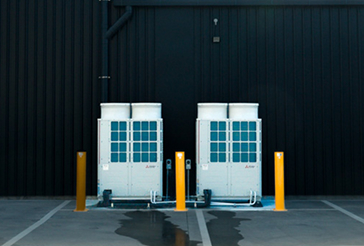
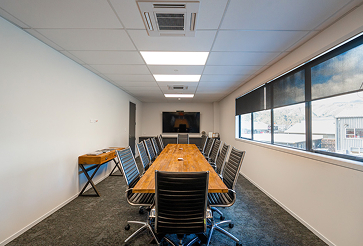
Complementary Lossnay Fresh Air Heat Recovery Ventilation
The Lossnay Fresh Air Energy Recovery Ventilation system complements R32 Hybrid by recovering up to 85% of heat energy from expelled air. This process pre-warmed or pre-cooled incoming fresh air, significantly reducing the load on air conditioning systems. By improving air quality and maintaining balanced humidity levels, Lossnay created a healthier environment for staff and visitors while complying with H1/VM3 regulations.
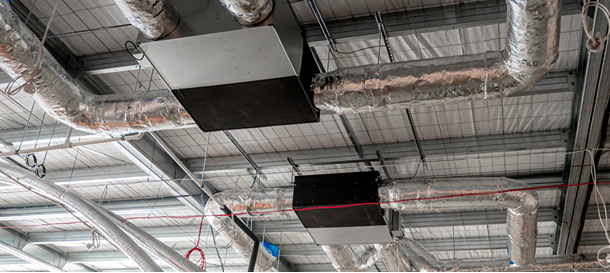
Smart Centralised Control
To optimise energy use and operational efficiency, the AE-200E controller was installed. It allows precise temperature management, scheduling, and multi-unit control. This ensures the HVAC system operates only during business hours, reducing unnecessary energy consumption while maintaining a comfortable indoor environment.
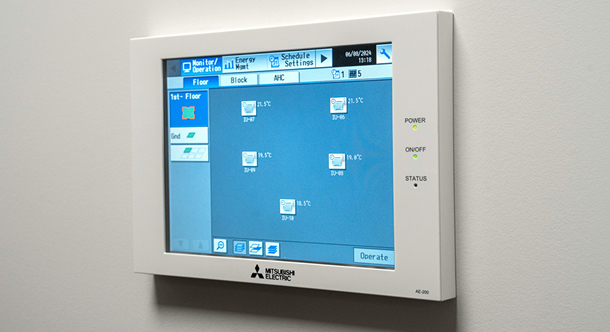
The Result
Mitsubishi Electric's HVAC solutions, implemented and recommended by ACSL, deliver a safe, efficient, and environmentally friendly workspace with stable, quiet operation, consistent temperatures, and fresh air — creating a comfortable environment where employees can thrive. Key outcomes include:
- A fivefold reduction in built carbon emissions compared to traditional systems.
- Over $100,000 in projected cost savings on maintenance over 15 years at the Lower Hutt site alone.
- Enhanced safety, operational efficiency, and future adaptability.
By adopting similar systems at their Timaru and Auckland sites, Hynds demonstrates how prioritising people and the planet can align with long-term profitability. Their commitment to innovative, sustainable solutions sets a benchmark for future-focused building practices, integrating people, planet, and profitability to lead the way in sustainable operations in New Zealand.
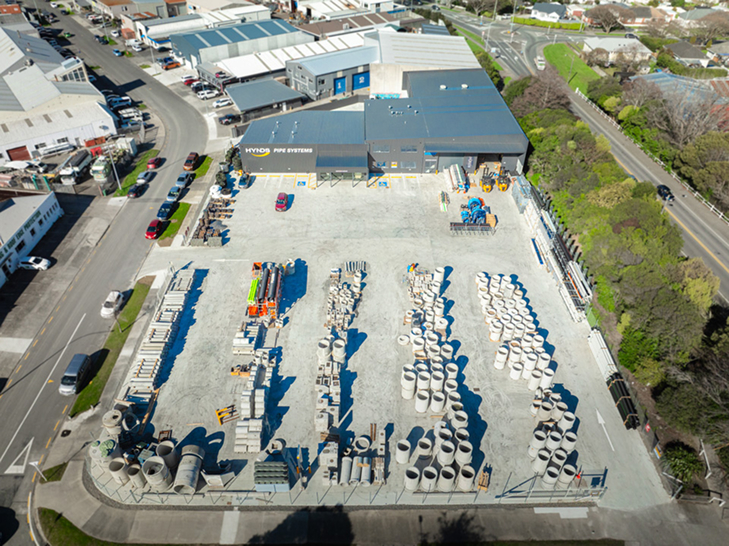
Equipment Breakdown
R32 Hybrid VRF System
Mitsubishi Electric R32 Hybrid VRF System
Fresh Air Energy Recovery Ventilation
Lossnay Fresh Air Heat Recovery Ventilation System
Control System
AE-200E Central Controller
Contractor
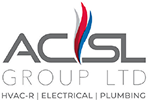
Client

Publications
 City Multi New Zealand Showcase - Edition 2.pdf (10,526 KB),
City Multi New Zealand Showcase - Edition 2.pdf (10,526 KB),
Created: Monday 8th of September 2014 City Multi New Zealand Showcase - Edition 1.pdf (7,386 KB),
City Multi New Zealand Showcase - Edition 1.pdf (7,386 KB),
Created: Tuesday 11th of June 2013 City Multi World Wide Case Studies.pdf (3,184 KB),
City Multi World Wide Case Studies.pdf (3,184 KB),
Created: Wednesday 23rd of April 2008
